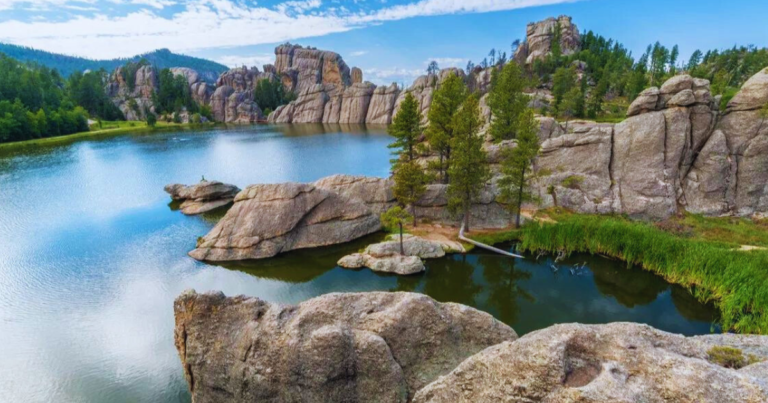Embarking on a road trip to visit Badlands National Park with a kayak is an adventure of a lifetime, especially when you’re traveling Onlybyland. This unique combination of rugged landscapes and water-based exploration offers an unparalleled experience for outdoor enthusiasts. If you’re wondering how to visit Badlands on a road trip with kayak Onlybyland, you’ve come to the right place.
This comprehensive guide will walk you through every aspect of planning and executing your journey, from choosing the right time to visit to navigating the park’s diverse terrain. We’ll cover essential gear, vehicle preparation, kayaking opportunities, and much more. Whether you’re a seasoned kayaker or a curious traveler looking to combine the thrill of a road trip with the serenity of paddling, this guide will ensure your Badlands adventure is both memorable and smooth. So buckle up, secure your kayak, and let’s dive into the ultimate Badlands road trip experience with Onlybyland.
Planning Your Badlands Road Trip with Kayak Onlybyland
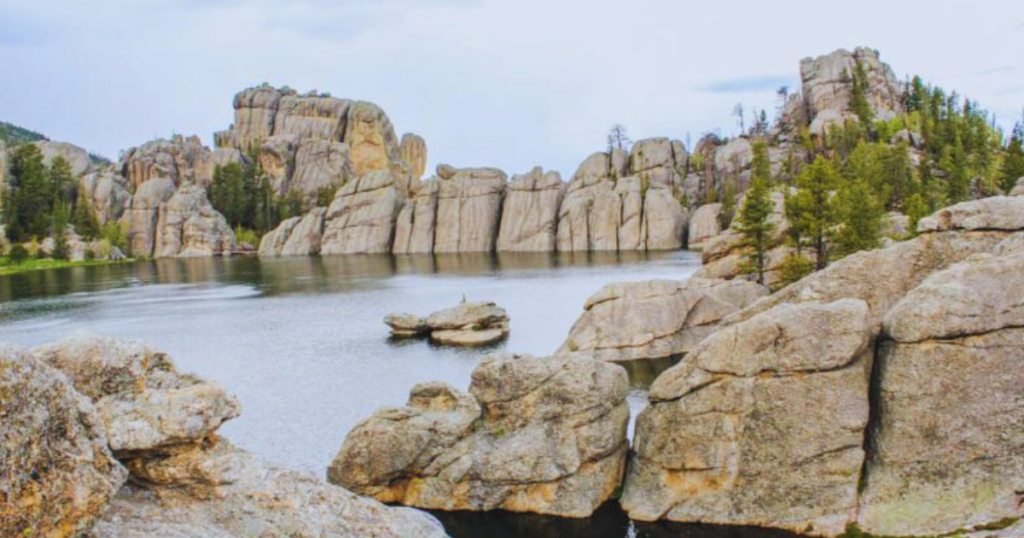
Planning is crucial when embarking on a road trip to visit Badlands with a kayak, especially when traveling Onlybyland. This unique adventure requires careful consideration of various factors to ensure a smooth and enjoyable experience. Let’s dive into the key aspects of planning your Badlands kayak road trip.
Choosing the Right Time to Visit Badlands
The timing of your visit can significantly impact your experience in Badlands National Park. The park is open year-round, but each season offers a distinct atmosphere and set of challenges. Summer (June to August) is the most popular time, with warm temperatures ideal for hiking and outdoor activities. However, it’s also the busiest and hottest period, with temperatures often exceeding 100°F (38°C).
Spring (April to May) and fall (September to October) offer milder temperatures and fewer crowds, making them excellent times for a kayak road trip. The landscape bursts with color in spring, while fall provides crisp air and golden prairies. Winter (November to March) can be harsh, with cold temperatures and occasional snowfall, but it offers a unique, stark beauty and solitude for adventurous travelers.
When planning your Onlybyland kayak trip, consider the weather patterns and how they might affect both your drive and kayaking opportunities. Always check the park’s official website for current conditions and any seasonal closures.
Mapping Your Route to Badlands National Park
Plotting your route is essential for an Onlybyland kayak road trip. Badlands National Park is located in southwestern South Dakota, about 75 miles east of Rapid City. If you’re coming from the east or west, Interstate 90 provides easy access to the park. From the north or south, you’ll likely use US Highway 85 or SD Highway 79.
Consider planning your route to include interesting stops along the way. This could include other natural attractions, historical sites, or kayak-friendly bodies of water. Use online mapping tools or GPS devices to plan your journey, but always have a physical map as a backup.
Essential Gear for a Kayak Road Trip to Badlands
Packing the right gear is crucial for a successful Badlands kayak road trip. Here’s a list of essentials:
- Kayak and paddle
- Personal Flotation Device (PFD)
- Roof rack or kayak trailer
- Tie-down straps and foam blocks
- Dry bags for equipment
- Sun protection (sunscreen, hat, sunglasses)
- First aid kit
- Navigation tools (maps, compass, GPS)
- Camping gear if planning to camp
- Appropriate clothing for varying weather conditions
Onlybyland-specific Considerations for Kayak Transportation
When traveling Onlybyland with a kayak, there are specific considerations to keep in mind. Ensure your vehicle is capable of safely transporting your kayak over long distances. If using a roof rack, check that it’s properly installed and rated for the weight of your kayak. For longer kayaks or multiple kayaks, a trailer might be a more suitable option.
Consider the aerodynamics of your setup. A poorly secured kayak can significantly impact your vehicle’s fuel efficiency and handling. Invest in a good quality kayak cover to protect it from road debris and extreme weather conditions during your journey.
Plan your route with kayak transportation in mind. You may need to avoid certain roads or low clearance areas depending on your setup. Also, be aware of height restrictions at any potential overnight stops or parking areas.
Preparing Your Vehicle for a Badlands Kayak Adventure

Proper vehicle preparation is crucial for a successful Badlands kayak road trip with Onlybyland. This section will guide you through selecting the right vehicle, installing a kayak rack, securing your kayak, and Onlybyland-specific tips for safe kayak transport.
Selecting the Right Vehicle for a Kayak Road Trip
When planning how to visit Badlands on a road trip with kayak Onlybyland, your choice of vehicle is paramount. Ideally, you want a vehicle that offers a balance between comfort, fuel efficiency, and the ability to safely transport your kayak. SUVs and crossovers are popular choices due to their versatility and roof space. However, sedans and hatchbacks can also be suitable if equipped with the right rack system.
Consider factors such as:
- Roof strength and design for rack installation
- Fuel efficiency for long-distance travel
- Interior space for gear and comfort on long drives
- Ground clearance for navigating varied terrain
- Towing capacity if you plan to use a kayak trailer
Installing a Kayak Rack or Carrier
Once you’ve selected your vehicle, the next step is to install a suitable kayak rack or carrier. There are several options available:
Roof Racks: These are the most common and versatile option. They can be permanent or temporary and come in various styles to fit different vehicle types.
J-Cradles: These J-shaped racks hold your kayak on its side, saving roof space for other gear.
Stackers: Ideal for transporting multiple kayaks, these allow you to position kayaks vertically.
Saddles: These contoured pads provide a secure fit for the hull of your kayak.
Trailer Hitch Racks: If your vehicle has a trailer hitch, these racks offer an alternative to roof mounting.
When installing your chosen rack, carefully follow the manufacturer’s instructions. Ensure all bolts and fittings are secure, and regularly check them throughout your trip.
Securing Your Kayak for Long-Distance Travel
Properly securing your kayak is crucial for safe transport, especially on a long road trip to Badlands. Here’s a step-by-step guide:
- Place foam blocks or rack pads on your vehicle’s roof to protect both the kayak and your car.
- Lift the kayak onto the roof rack or carrier, ensuring it’s centered and sitting securely.
- Use cam straps to secure the kayak to the rack. Avoid rope, as it can stretch and loosen over time.
- Attach the straps to the strongest parts of your kayak, typically the carry handles or toggle handles.
- Secure the bow and stern with additional straps or ropes to prevent the kayak from lifting at high speeds.
- Check the kayak’s security by pushing it from various angles. It should not move or shift.
- After driving for a short distance, stop and re-check all straps and the kayak’s position.
Onlybyland Tips for Safe Kayak Transport on the Road
When planning how to visit Badlands on a road trip with kayak Onlybyland, consider these additional tips:
Speed Awareness: Be mindful that your vehicle’s handling may change with a kayak on top. Reduce your speed, especially in windy conditions.
Height Clearance: Remember the added height of your kayak when entering parking garages or drive-thrus.
Fuel Efficiency: A roof-mounted kayak can significantly impact your vehicle’s aerodynamics. Plan for increased fuel consumption.
Security: Use lockable straps or a cable lock to secure your kayak to the rack when leaving your vehicle unattended.
Weather Protection: Consider using a kayak cover to protect against road debris, insects, and extreme weather during your journey.
Regular Checks: Make it a habit to check your kayak and straps every time you stop for gas or breaks.
Emergency Kit: Pack a small repair kit including spare straps, a multi-tool, and duct tape for any roadside fixes.
Navigating to Badlands National Park
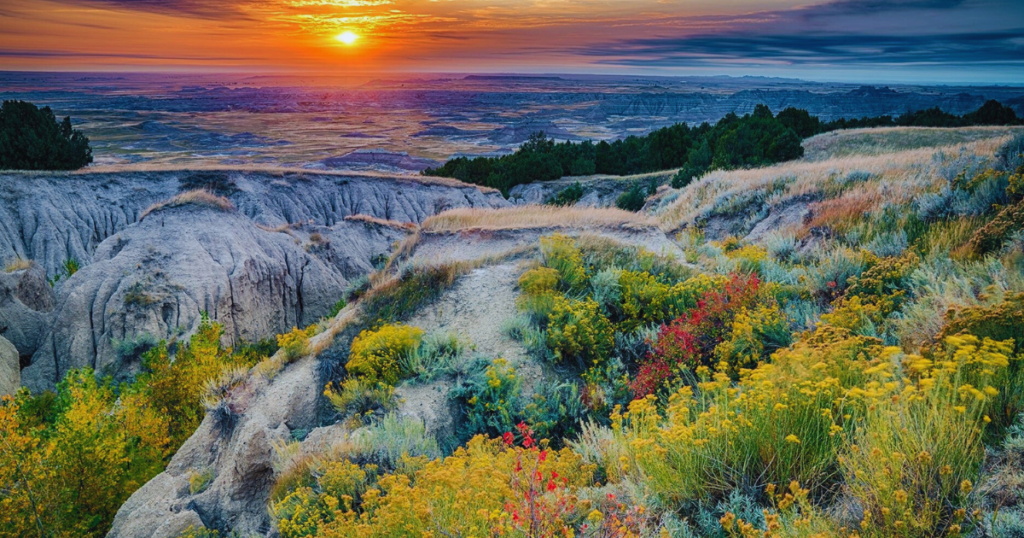
When planning how to visit Badlands on a road trip with kayak Onlybyland, understanding the best routes and considering key factors along the way is essential. This section will guide you through the best routes to reach Badlands, recommend stops along the way, discuss Onlybyland-friendly accommodations, and provide tips for managing fuel stops and breaks while transporting a kayak.
Best Routes for Reaching Badlands with a Kayak
The route you choose to reach Badlands National Park will depend on your starting location. However, there are a few main approaches that are particularly suitable for those traveling with a kayak:
From the East: If you’re coming from the eastern United States, Interstate 90 is your best bet. This well-maintained highway runs directly north of the park and provides easy access via exit 110 at Wall, South Dakota.
From the West: Again, I-90 is the primary route. You’ll likely pass through Rapid City before reaching the park.
From the North: Use US Highway 85 south to I-90, then head east to the park.
From the South: Take US Highway 385 north to Hot Springs, then east on US Highway 18 to the park’s southern entrance.
When planning your route, consider roads that are less winding and have fewer low clearance areas, as these can be challenging when transporting a kayak. Also, look for routes with regular rest stops where you can check your kayak’s security.
Recommended Stops Along the Way
Your journey to Badlands is an opportunity to explore other fascinating sites. Here are some recommended stops, depending on your route:
Mount Rushmore National Memorial: Located about 90 minutes west of Badlands, this iconic landmark is a must-see.
Custer State Park: Known for its scenic drives and abundant wildlife, it’s a great place to stretch your legs.
Wall Drug: This famous roadside attraction is just north of the park and offers a quirky break from driving.
Minuteman Missile National Historic Site: Learn about the Cold War at this site just north of the park.
Buffalo Gap National Grassland: Surrounding much of Badlands, this area offers additional outdoor recreation opportunities.
Onlybyland-Friendly Accommodations During Your Journey
Finding suitable accommodations when traveling with a kayak requires some extra consideration. Look for places that offer:
- Ample parking: Ensure there’s space for your vehicle with the kayak attached.
- Ground floor rooms or easy access: This makes it easier to keep an eye on your kayak.
- Security: Choose accommodations with well-lit parking areas or security patrols.
- Proximity to your route: This minimizes unnecessary driving with your kayak.
Some Onlybyland-friendly options near Badlands include:
- Frontier Cabins in Wall, SD
- Badlands Interior Motel and Campground
- Sleepy Hollow Campground in Wall, SD
Always call ahead to inform the accommodation about your kayak and ask about their policies and facilities.
Managing Fuel Stops and Breaks While Transporting a Kayak
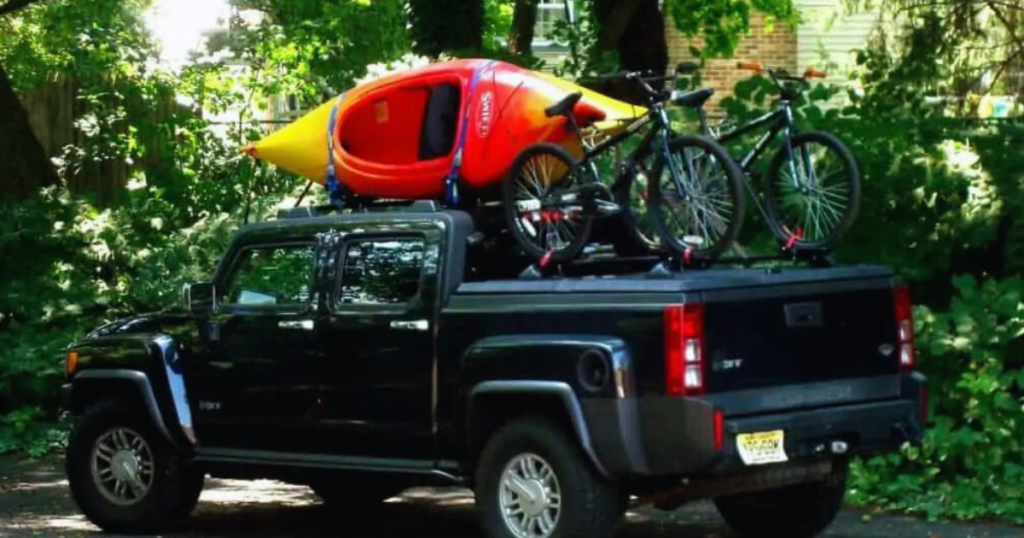
Efficient management of fuel stops and breaks is crucial for a smooth journey. Here are some tips:
Plan your fuel stops: Map out gas stations along your route, focusing on larger stations with ample space for maneuvering.
Combine stops: Try to align your fuel stops with meal breaks and rest stops to minimize the number of times you need to park and unpark with your kayak.
Take regular breaks: Stop every 2-3 hours to check your kayak’s security and stretch your legs.
Be mindful of parking: When stopping, look for pull-through parking spots or areas with plenty of space to maneuver.
Stay vigilant: Always keep your kayak in sight during stops, or use a locking system if you need to leave it unattended.
Check straps and position: Use each stop as an opportunity to ensure your kayak is still securely fastened and positioned correctly.
Monitor fuel efficiency: Keep in mind that carrying a kayak may decrease your vehicle’s fuel efficiency. Plan for more frequent fuel stops than you might normally need.
Exploring Badlands National Park

Once you’ve successfully navigated how to visit Badlands on a road trip with kayak Onlybyland, it’s time to immerse yourself in the park’s stunning landscapes. This section will guide you through the park entry process, highlight must-see attractions, discuss suitable hiking trails for kayakers, and point out wildlife viewing opportunities.
Park Entry and Fees
Entering Badlands National Park is straightforward, but it’s important to be prepared. The park has two main entrances: the Northeast Entrance near the town of Interior, and the Pinnacles Entrance near Wall, South Dakota. Both are accessible from I-90.
As of 2024, the entrance fees are as follows:
- Private Vehicle: $30 (valid for 7 days)
- Motorcycle: $25 (valid for 7 days)
- Per Person (on foot or bicycle): $15 (valid for 7 days)
If you plan to visit multiple national parks in a year, consider purchasing an America the Beautiful Annual Pass for $80, which grants access to all national parks and federal recreational lands.
Upon entry, you’ll receive a park map and informational brochure. Take a moment to familiarize yourself with park rules and regulations, especially those pertaining to kayak use in the park and surrounding areas.
Must-See Attractions and Viewpoints
Badlands National Park is renowned for its striking geological formations and expansive prairies. Here are some must-visit spots:
Badlands Loop Road: This 39-mile scenic drive offers numerous overlooks and is the backbone of most visits to the park.
Pinnacles Overlook: One of the park’s most spectacular viewpoints, especially at sunset.
Notch Trail: A moderate 1.5-mile round trip hike offering stunning views of the White River Valley.
Fossil Exhibit Trail: An accessible boardwalk trail showcasing the park’s rich paleontological history.
Roberts Prairie Dog Town: Observe these charismatic creatures in their natural habitat.
Yellow Mounds Overlook: Witness the park’s most colorful geological formations.
Big Badlands Overlook: Offers a panoramic view of the Badlands’ rugged beauty.
Hiking Trails Suitable for Kayakers
While your main focus might be kayaking, Badlands offers excellent hiking opportunities that complement your paddling adventures. Here are some trails well-suited for kayakers looking to stretch their legs:
Door Trail (0.75 miles round trip): An easy walk into a break in the Badlands Wall, perfect for a quick exploration.
Window Trail (0.25 miles round trip): A short trail leading to a natural window in the Badlands Wall.
Saddle Pass Trail (0.7 miles round trip): A steep but rewarding climb offering panoramic views.
Castle Trail (10 miles round trip): The park’s longest trail, ideal for those wanting a full day hike. It can be broken into shorter segments.
Medicine Root Loop (4 miles round trip): A moderate trail traversing mixed grass prairie with views of the Badlands in the distance.
When hiking, remember to carry plenty of water, wear sturdy shoes, and protect yourself from the sun. The Badlands’ terrain can be challenging, so choose trails that match your fitness level and the time you have available.
Wildlife Viewing Opportunities
Badlands National Park is home to a diverse array of wildlife, making it an excellent destination for nature enthusiasts. Here are some animals you might encounter:
- Bison: The park’s largest mammals, often seen grazing in the grasslands.
- Bighorn Sheep: Look for them on steep, rocky slopes.
- Pronghorn: The fastest land animal in North America, often spotted in open prairies.
- Prairie Dogs: Abundant in designated towns throughout the park.
- Coyotes: Most active during dawn and dusk.
- Various Bird Species: Including golden eagles, prairie falcons, and burrowing owls.
For the best wildlife viewing opportunities, visit during early morning or late afternoon when animals are most active. Always maintain a safe distance from wildlife and never feed them.
Kayaking Opportunities Near Badlands National Park
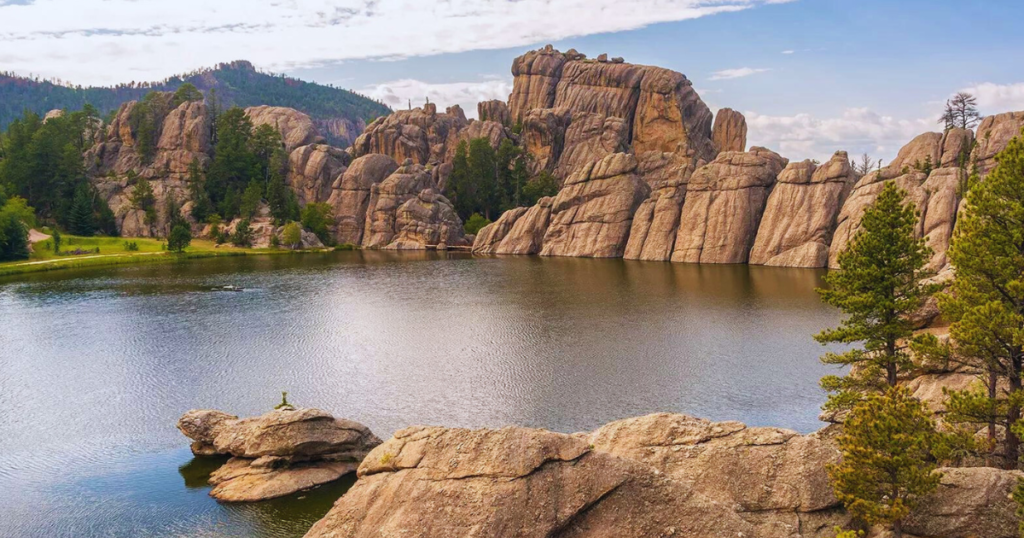
While Badlands National Park itself doesn’t offer kayaking within its boundaries, there are several excellent kayaking opportunities in the surrounding area. This section will explore nearby lakes and rivers for kayaking, discuss safety considerations, recommend specific kayaking spots for Onlybyland travelers, and cover permits and regulations for kayaking in the region.
Nearby Lakes and Rivers for Kayaking
When planning how to visit Badlands on a road trip with kayak Onlybyland, consider these nearby water bodies for your paddling adventures:
Angostura Reservoir: Located about 80 miles southwest of Badlands, this 4,407-acre reservoir offers calm waters perfect for kayaking. It’s known for its scenic beauty and excellent fishing opportunities.
Lake Oahe: This massive reservoir on the Missouri River is about 150 miles east of Badlands. It offers 2,250 miles of shoreline and numerous kayaking opportunities.
Pactola Reservoir: Situated in the Black Hills, about 90 miles west of Badlands, this clear mountain lake is surrounded by pine forests and offers a serene kayaking experience.
Cheyenne River: This river flows north of Badlands and offers more challenging kayaking for experienced paddlers. Access points can be found near the town of Wasta.
Belle Fourche Reservoir: Located about 120 miles northwest of Badlands, this reservoir provides another option for flatwater kayaking.
Safety Considerations for Kayaking in the Badlands Area
Safety should be your top priority when kayaking near Badlands. Here are some key considerations:
Weather: The area can experience rapid weather changes. Always check the forecast before heading out and be prepared for wind, which can make paddling challenging.
Sun Protection: The sun can be intense in this region. Wear sunscreen, a hat, and UV-protective clothing.
Hydration: Carry plenty of water to stay hydrated in the arid climate.
Wildlife: Be aware of local wildlife, including water snakes and snapping turtles. Give animals space and never feed them.
Skill Level: Choose kayaking locations that match your skill level. Some areas may have currents or waves that require more experience.
Personal Flotation Device (PFD): Always wear a properly fitted PFD while on the water.
Communication: Carry a waterproof phone case or a whistle for emergencies.
Recommended Kayaking Spots for Onlybyland Travelers
For those wondering how to visit Badlands on a road trip with kayak Onlybyland, here are some specific spots to consider:
Angostura Recreation Area: Offers easy access to Angostura Reservoir with developed boat ramps and camping facilities.
West Bend Recreation Area: Located on Lake Oahe, this area provides good kayaking access and camping options.
Pactola Reservoir: Jenny Gulch area offers a nice put-in spot for kayakers.
Cheyenne River at Wasta: For more experienced kayakers, this spot offers a taste of river kayaking.
Rocky Point Recreation Area: Situated on Belle Fourche Reservoir, this area provides good kayaking opportunities with camping facilities.
Permits and Regulations for Kayaking in the Region
Understanding local regulations is crucial for a smooth kayaking experience:
State Parks: Most lakes mentioned require a state park entrance license. You can purchase daily or annual passes.
Boat Registration: If your kayak is over a certain length (typically 10 feet), it may need to be registered with the state. Check South Dakota Game, Fish and Parks regulations for specifics.
Invasive Species: To prevent the spread of invasive species, clean, drain, and dry your kayak before moving between water bodies.
Fishing Licenses: If you plan to fish from your kayak, you’ll need a South Dakota fishing license.
Camping Permits: If you’re planning to camp near your kayaking spots, check if permits are required for specific campgrounds.
Life Jacket Regulations: South Dakota law requires all vessels, including kayaks, to have one wearable U.S. Coast Guard-approved life jacket for each person on board.
Alcohol: It’s illegal to operate any boat while under the influence of alcohol or drugs.
The combination of exploring the unique landscapes of Badlands National Park and enjoying kayaking adventures in the surrounding area offers a truly memorable Onlybyland journey.
Camping and Accommodation Options
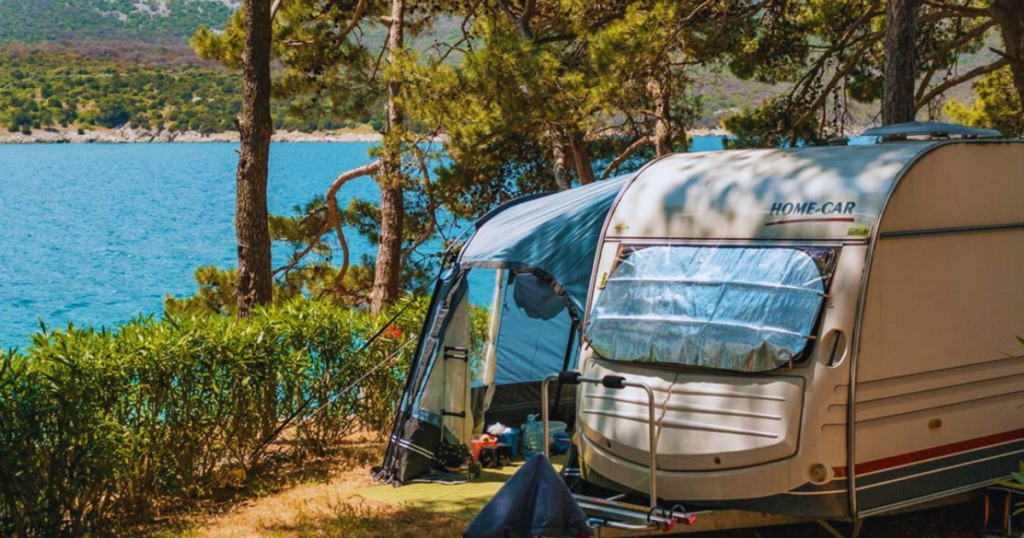
When planning how to visit Badlands on a road trip with kayak Onlybyland, finding suitable accommodation is crucial. This section will explore camping options within Badlands National Park, RV parks and facilities for kayakers, nearby hotels and lodges, and Onlybyland-approved accommodations for kayak storage.
Campgrounds within Badlands National Park
Badlands National Park offers two campgrounds that provide an immersive experience in the park’s unique environment:
Cedar Pass Campground: Located near the Ben Reifel Visitor Center, this campground offers 96 level sites suitable for tents and RVs. Amenities include:
- Flush toilets and cold running water
- Covered picnic tables
- Electric hookups at some sites
- Dump station
- Nearby restaurant and gift shop
Sage Creek Campground: This more primitive campground is ideal for those seeking a rustic experience. It offers:
- 22 first-come, first-served sites
- Pit toilets
- Covered picnic tables
- No water on site (bring your own)
Both campgrounds allow you to store your kayak at your campsite, but be sure to secure it properly and protect it from the elements.
RV Parks and Facilities for Kayakers
For those traveling in RVs or seeking more amenities, several options near Badlands cater to kayakers:
- Badlands Interior Campground: Located just outside the park, it offers full hookups, a dump station, and space for kayak storage.
- Sleepy Hollow Campground & RV Park: Situated in Wall, SD, this park provides full hookups, Wi-Fi, and a convenient location for exploring Badlands.
- Minuteman RV Park & Lodging: Also in Wall, this park offers spacious RV sites and secure storage options for kayaks.
These RV parks often have designated areas for kayak storage or allow you to keep your kayak at your site, making them ideal for Onlybyland travelers.
Nearby Hotels and Lodges
If you prefer more comfortable accommodations, several hotels and lodges near Badlands National Park cater to outdoor enthusiasts:
Cedar Pass Lodge: Located within the park, this lodge offers air-conditioned cabins and easy access to park attractions.
Badlands Budget Host Inn: Situated in Interior, SD, this motel provides basic amenities and is kayak-friendly.
Best Western Plains Motel: Located in Wall, SD, this hotel offers comfortable rooms and ample parking for vehicles with kayaks.
Circle View Guest Ranch: This unique accommodation near Interior, SD, offers rooms and camping options with stunning views of the Badlands.
When booking, always inform the property that you’re traveling with a kayak to ensure they can accommodate your needs.
Onlybyland-Approved Accommodations for Kayak Storage
When traveling Onlybyland with a kayak, look for accommodations that offer:
Secure Storage: Properties with locked storage areas or surveillance cameras for safe kayak keeping.
Ground Floor Access: Rooms or cabins that allow easy access to your vehicle and kayak.
Spacious Parking: Ample parking space to accommodate your vehicle with the kayak attached.
Cleaning Facilities: Areas where you can rinse and clean your kayak if needed.
Knowledgeable Staff: Accommodations with staff familiar with kayakers’ needs and local paddling spots.
Some Onlybyland-approved options include:
Frontier Cabins in Wall, SD: Offers individual cabins with space to store kayaks.
Badlands Inn: Provides ground floor rooms and ample parking.
Butte View Campground: Allows kayak storage at campsites and offers cleaning facilities.
When choosing your accommodation, consider its proximity to both Badlands National Park and your planned kayaking spots. This will minimize travel time and allow you to make the most of your Badlands kayak road trip.
Practical Tips for Your Badlands Kayak Road Trip

When planning how to visit Badlands on a road trip with kayak Onlybyland, it’s essential to consider the practical aspects of your journey. This section will cover packing essentials, managing food and water supplies, staying connected, and Onlybyland strategies for a smooth kayak road trip experience.
Packing Essentials for a Combined Road Trip and Kayaking Adventure
Efficient packing is crucial for a successful Badlands kayak road trip. Here’s a comprehensive list of essentials:
Kayaking Gear:
- Kayak and paddle
- Personal Flotation Device (PFD)
- Spray skirt (if applicable)
- Bilge pump and sponge
- Dry bags for equipment
- Kayak cart for portaging
Camping Equipment:
- Tent
- Sleeping bag and pad
- Camping stove and fuel
- Cookware and utensils
- Headlamp or flashlight
Clothing:
- Quick-dry shirts and pants
- Waterproof jacket
- Sun-protective clothing
- Sturdy hiking boots
- Water shoes
- Hat and sunglasses
Safety and Navigation:
- First aid kit
- Maps and compass
- GPS device
- Multi-tool
- Emergency whistle
- Sunscreen and insect repellent
Vehicle Essentials:
- Spare tire and jack
- Basic tool kit
- Extra kayak straps
- Roadside emergency kit
Managing Food and Water Supplies
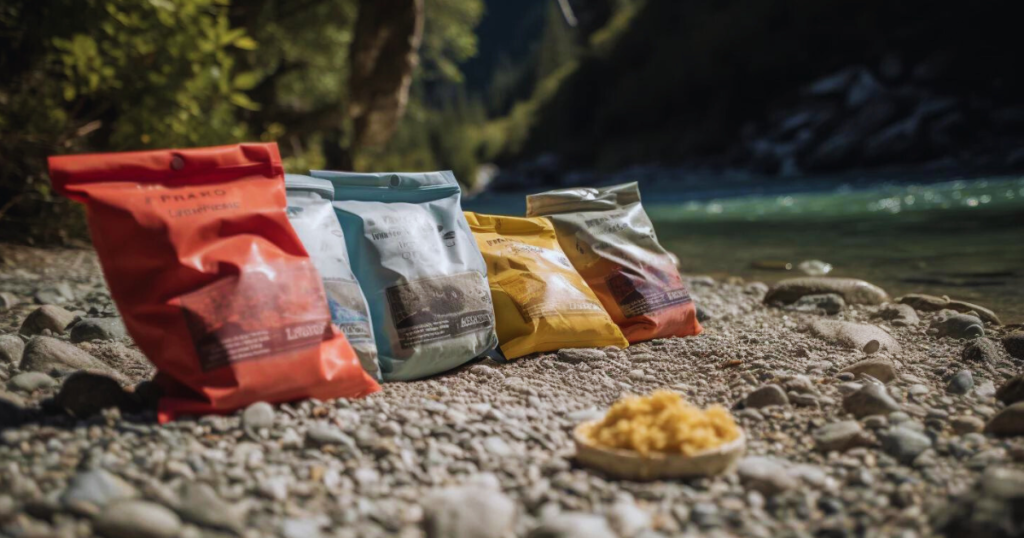
Proper food and water management is crucial in the Badlands region:
Water:
- Carry more water than you think you’ll need
- Bring a water filtration system for emergencies
- Pack electrolyte supplements for hot days
Food:
- Plan meals in advance
- Pack non-perishable, high-energy foods
- Bring a cooler for perishables
- Include easy-to-prepare meals for camping
Food Storage:
- Use airtight containers to prevent attracting wildlife
- If camping, store food in your vehicle or use bear canisters
Resupply Points:
- Research grocery stores and restaurants along your route
- Plan meals around your itinerary and available facilities
Staying Connected: Cell Coverage and Internet Access in Badlands
Connectivity can be limited in and around Badlands National Park:
Cell Coverage:
- Coverage is spotty within the park
- Major providers have better coverage in nearby towns
Internet Access:
- The Ben Reifel Visitor Center offers Wi-Fi
- Most accommodations in Wall and Interior provide Wi-Fi
Offline Preparations:
- Download offline maps before your trip
- Bring physical maps as backups
- Consider a satellite communication device for emergencies
Onlybyland Strategies for a Smooth Kayak Road Trip Experience
To ensure a seamless Onlybyland kayak road trip to Badlands:
Vehicle Checks:
- Service your vehicle before the trip
- Check tire pressure and fluid levels regularly
- Inspect kayak attachments at every stop
Itinerary Planning:
- Balance driving, kayaking, and sightseeing
- Allow extra time for kayak loading and unloading
- Plan your route to include kayak-friendly rest stops
Kayak Maintenance:
- Rinse your kayak after each use to prevent damage from mineral deposits
- Check for any damage or wear daily
- Protect your kayak from extreme temperatures when parked
Energy Management:
- Start your days early to avoid peak heat
- Take regular breaks to prevent fatigue
- Stay hydrated, especially during kayaking sessions
Local Knowledge:
- Engage with park rangers for up-to-date information
- Connect with local kayaking groups for insider tips
- Be aware of local regulations and respect them
Flexibility:
- Have backup plans for kayaking spots
- Be prepared to adjust your itinerary based on weather or park conditions
With these practical tips, you’ll be well prepared for your Badlands kayak road trip. Remember, thorough planning and flexibility are the keys to a successful Onlybyland adventure. Embrace the unique experiences that come with road trips, kayaking, and exploring the spectacular Badlands National Park.
Safety Considerations
When planning how to visit Badlands on a road trip with kayak Onlybyland, safety should be a top priority. This section will cover weather patterns and precautions in Badlands, emergency preparedness for road trips with kayaks, wildlife safety in Badlands National Park, and Onlybyland safety tips for kayak transportation and storage.
Weather Patterns and Precautions in Badlands
Badlands National Park experiences extreme weather conditions that can change rapidly. Being prepared for these conditions is crucial for a safe and enjoyable trip:
Summer (June-August):
- Temperatures can exceed 100°F (38°C)
- Take precautions against heat exhaustion and sunburn
- Carry plenty of water and seek shade during peak hours
Winter (November-March):
- Temperatures can drop below 0°F (-18°C)
- Be prepared for snow and ice on roads
- Pack warm, layered clothing and emergency blankets
Spring and Fall:
- Weather is milder but unpredictable
- Be prepared for sudden temperature changes
- Watch for thunderstorms, especially in late spring and early summer
Year-round Precautions:
- Check weather forecasts daily
- Be aware of severe weather warnings, including tornadoes
- Protect yourself from strong winds, which can be dangerous when transporting a kayak
Emergency Preparedness for Road Trips with Kayaks
When embarking on a road trip with a kayak, it’s essential to be prepared for emergencies:
Vehicle Emergency Kit:
- Include a first aid kit, flashlight, basic tools, jumper cables, and a spare tire
- Pack extra kayak straps and repair materials
Communication:
- Carry a fully charged cell phone and a portable charger
- Consider a satellite communication device for areas with no cell coverage
Navigation:
- Bring physical maps as a backup to GPS devices
- Inform someone of your travel plans and expected return date
Roadside Assistance:
- Consider joining a roadside assistance program
- Know how to change a tire with your kayak mounted
Emergency Food and Water:
- Pack non-perishable food and extra water
- Include a water filtration system for emergencies
Wildlife Safety in Badlands National Park
Badlands is home to various wildlife species. Follow these guidelines to ensure your safety and protect the animals:
Bison and Bighorn Sheep:
- Maintain a distance of at least 100 yards
- Never approach or feed these animals
- If an animal approaches, slowly back away
Prairie Dogs:
- Do not feed or touch them, as they can carry diseases
- Stay on designated trails to avoid damaging their burrows
Rattlesnakes:
- Watch where you step and place your hands
- If you encounter a snake, give it space and walk away slowly
General Wildlife Safety:
- Observe animals from a safe distance
- Never feed wildlife
- Store food securely to avoid attracting animals to your campsite
Onlybyland Safety Tips for Kayak Transportation and Storage
Ensuring the safety of your kayak during transportation and storage is crucial for an Onlybyland trip:
Secure Transportation:
- Double-check all straps and ties before each journey
- Use bow and stern lines for added security
- Stop periodically to check your kayak’s position
Loading and Unloading:
- Use proper lifting techniques to avoid injury
- Consider using a kayak cart for easier transportation
- Be aware of your surroundings when loading/unloading near traffic
Storage at Campsites:
- Secure your kayak to a fixed object when not in use
- Use a kayak cover to protect it from the elements
- Store it away from campfires and other heat sources
Parking Considerations:
- Choose well-lit areas when parking overnight
- Use a lock to secure your kayak to your vehicle
- Be mindful of height restrictions in parking areas
Weather Protection:
- Protect your kayak from extreme heat and cold
- If possible, store it in shade to prevent warping
Safety should always be your primary concern when exploring the great outdoors. With proper preparation and awareness, you can ensure a safe and memorable Onlybyland adventure in Badlands National Park.
Preserving Badlands: Responsible Tourism
As you plan how to visit Badlands on a road trip with kayak Onlybyland, it’s crucial to consider the impact of your visit on this unique ecosystem. This section will cover Leave No Trace principles for kayakers, ways to support local communities, strategies for minimizing your environmental impact, and Onlybyland’s commitment to sustainable travel.
Leave No Trace Principles for Kayakers
The Leave No Trace (LNT) ethics are especially important for kayakers visiting the Badlands area. Here’s how to apply these principles:
Plan Ahead and Prepare:
- Research regulations and special concerns for the areas you’ll visit
- Prepare for extreme weather, hazards, and emergencies
- Schedule your trip to avoid times of high use
Travel and Camp on Durable Surfaces:
- Use established trails and campsites
- Camp at least 200 feet from lakes and streams
- Keep campsites small and focused in areas without vegetation
Dispose of Waste Properly:
- Pack out all trash, leftover food, and litter
- Use designated restroom facilities or bury human waste 6-8 inches deep, 200 feet from water sources
- Wash yourself and your dishes 200 feet away from water sources using biodegradable soap
Leave What You Find:
- Preserve the past: examine, but do not touch, cultural or historic structures and artifacts
- Leave rocks, plants, and other natural objects as you find them
- Avoid introducing or transporting non-native species
Minimize Campfire Impacts:
- Use a lightweight stove for cooking and enjoy a candle lantern for light
- Where fires are permitted, use established fire rings, keep fires small, and burn all wood to ash
Respect Wildlife:
- Observe wildlife from a distance. Do not follow or approach them
- Never feed animals. Feeding wildlife damages their health, alters natural behaviors, and exposes them to predators and other dangers
Be Considerate of Other Visitors:
- Respect other visitors and protect the quality of their experience
- Be courteous. Yield to other users on the trail
- Let nature’s sounds prevail. Avoid loud voices and noises
Supporting Local Communities During Your Visit
Your visit can have a positive impact on the local economy:
Shop Local:
- Purchase supplies from local stores in Wall or Interior
- Buy locally made souvenirs and crafts
Eat Local:
- Try restaurants that serve local specialties
- Visit farmers markets if available
Use Local Services:
- Consider hiring local guides for specialized tours
- Use local outfitters for any equipment rentals
Engage with the Community:
- Attend local events or festivals if they coincide with your visit
- Visit local museums to learn about the area’s history and culture
Minimizing Your Environmental Impact
Beyond LNT principles, consider these additional ways to reduce your impact:
Water Conservation:
- Use water sparingly, especially in campgrounds
- Reuse water bottles instead of buying single-use plastic bottles
Energy Efficiency:
- Turn off lights and air conditioning when leaving your accommodation
- Use natural light and ventilation when possible
Responsible Kayaking:
- Avoid disturbing aquatic vegetation and wildlife
- Clean your kayak thoroughly before and after use to prevent the spread of invasive species
Sustainable Transportation:
- Combine trips to reduce driving
- Consider carpooling if traveling with a group
Onlybyland’s Commitment to Sustainable Travel
As an Onlybyland traveler, you’re part of a community committed to responsible tourism:
Education:
- Share your knowledge of sustainable practices with fellow travelers
- Learn about the ecological importance of the Badlands region
Respectful Photography:
- Follow park guidelines for drone usage and photography
- Avoid disturbing wildlife or damaging flora for the sake of a photo
Volunteer Opportunities:
- Look for chances to participate in local conservation efforts
- Consider joining a park clean-up event if available
Feedback and Advocacy:
- Provide constructive feedback to parks and local businesses about their sustainability practices
- Advocate for conservation and sustainable tourism practices
As an Onlybyland traveler with a kayak, you have a unique opportunity to explore and appreciate this stunning landscape while minimizing your impact. Your commitment to responsible tourism helps ensure that the Badlands will continue to inspire and awe visitors for years to come.
Conclusion
In conclusion, embarking on a journey to visit Badlands on a road trip with kayak Onlybyland is an adventure that combines the thrill of the open road with the serenity of paddling amidst stunning landscapes. By carefully planning your route, preparing your vehicle and kayak, exploring the park’s wonders, and embracing nearby kayaking opportunities, you’ll create an unforgettable experience. Remember to prioritize safety, practice responsible tourism, and immerse yourself in the unique beauty of the Badlands region. Whether you’re navigating the park’s rugged terrain or gliding across nearby waters, your Onlybyland kayak road trip to Badlands promises a perfect blend of exploration and adventure.
FAQs About How to Visit Badlands on a Road Trip With Kayak Onlybyland
What’s the best time of year to visit Badlands with a kayak Onlybyland?
The best time is late spring (May-June) or early fall (September-October) when temperatures are mild and crowds are smaller. This allows for comfortable kayaking and exploring the park.
Are there kayaking opportunities within Badlands National Park?
Badlands National Park itself doesn’t offer kayaking opportunities. However, there are several lakes and rivers nearby, such as Angostura Reservoir and Cheyenne River, where you can kayak.
How do I secure my kayak for a long road trip to Badlands?
Use a sturdy roof rack or trailer, secure the kayak with strong straps, and use bow and stern lines for extra security. Always double-check the attachments before driving and after stops.
What are some must-see attractions in Badlands National Park when visiting with a kayak Onlybyland?
Don’t miss the Badlands Loop Road, Pinnacles Overlook, Notch Trail, and the Fossil Exhibit Trail. These can be easily accessed while traveling with a kayak.
How should I prepare my vehicle for a Badlands kayak road trip Onlybyland?
Ensure your vehicle is in good condition, install a proper kayak rack, and pack an emergency kit. Consider the added height of your kayak when planning your route and parking.
What are some good camping options for kayakers visiting Badlands?
Cedar Pass Campground within the park is a good option. For more amenities, consider Badlands Interior Campground or Sleepy Hollow Campground in Wall, which are kayak-friendly.
How can I practice responsible tourism when visiting Badlands with a kayak Onlybyland?
Follow Leave No Trace principles, respect wildlife, support local businesses, and ensure you clean your kayak before and after use to prevent the spread of invasive species. Always adhere to park regulations and guidelines.

Nigel Foster, born in 1952, is an esteemed sea kayaker, known for being the youngest to kayak around Iceland. His journey in kayaking started at 15 in Brighton, England. With a career beginning as a trainee instructor in Sussex, he later pursued teaching after attending Redland College, Bristol.
Foster’s notable expeditions include navigating the challenging waters of Newfoundland and the Hudson Strait. Despite facing intense conditions, his passion for kayaking never waned. He holds several British Canoe Union qualifications and has significantly contributed to the kayaking community through teaching and committee work.
In 1985, Foster expanded his horizons by assisting an expedition in Iceland and later founded his own kayaking business, sharing his expertise globally.
